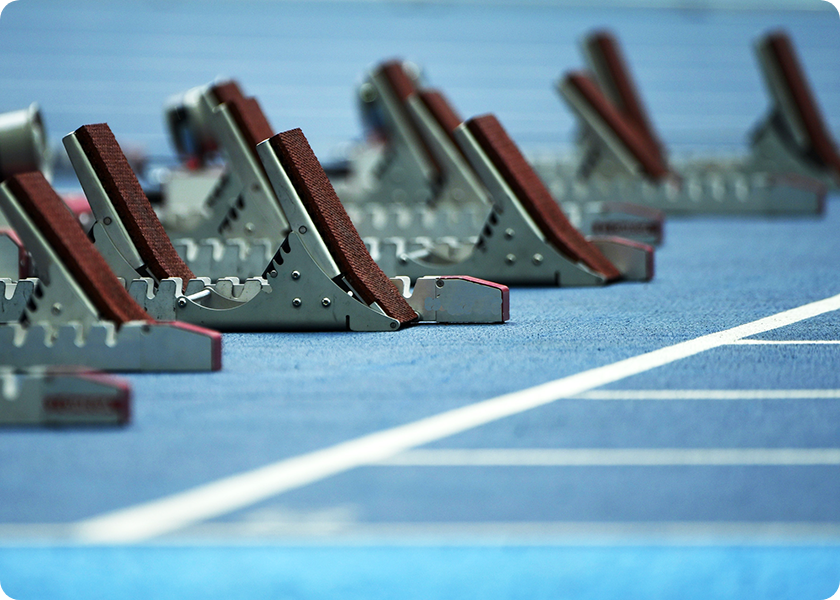World Athletics@TDK
[No.5 Sprints and middle and long distance runs]Ultimate performances that develop on the track

The martial arts of track events, the 800m run
Track events at IAAF World Athletics Championships and Olympic Games include sprints (100m, 200m, and 400m), middle distance (800m, 1500m, and 3000m), long distance (5000m and 10000m), relay races and hurdles.
Among them the 800m run, two laps on the oval track, is called the “martial arts of running.” Runners keep to their own lanes for the first 100 meters, then the course becomes open after passing the second corner. They then fight to be in a more advantageous position, and it is not rare for them to jostle or collide with one another, or even fall over.
In addition, the race requires anaerobic exercise for instantaneous force as well as aerobic exercise for endurance. It is also exciting to see how the runners develop their strategies in relation to their competitors and decide where they plunge into the final sprint. It is also a victory-determining factor in middle distance races to control the pace while maintaining stamina. It is inevitable that the runners slow down from around the middle of the race, but they switch to the sprinting mode in the last section, summoning their remaining stamina to sprint.
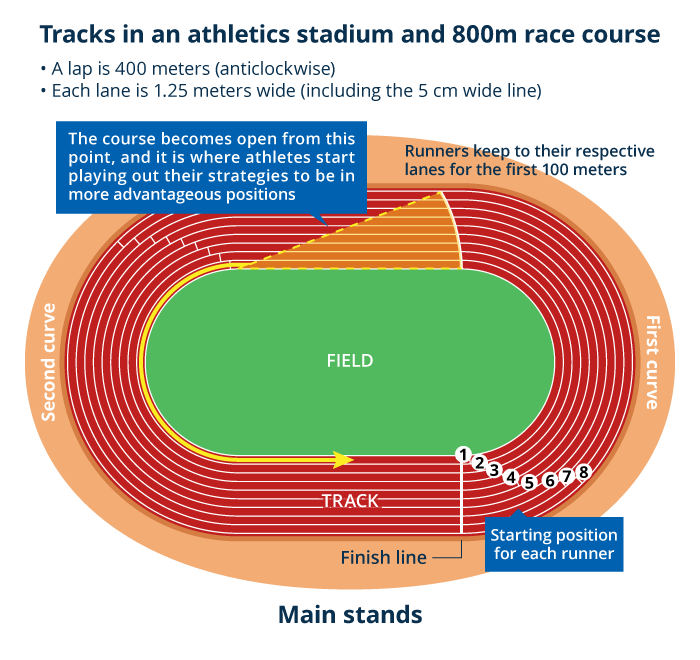
How far will the 100m sprint record go?
The current world record in the 100m sprint is 9.58 seconds held by Usain Bolt (2009). The first breaking of the 10-second barrier was in 1968 (9.95 s by Jim Hines), thus the time has been reduced by 0.37 seconds in about 40 years. Together with the improvement made in equipment, it is predicted that the record will reach the 9.30 second mark around 2050.
Cheetahs are the top sprinters in the animal world. They can reach a speed of 100 km/h in a few seconds and sprint 100 meters in less than 4 seconds. However, cheetahs are relatively small in the animal world, weighing only 45 to 70 kg. They are considered to be able to expand and contract four legs effectively, which accounts for their sprinting ability. In other words, it is not the quantity, but the quality of the muscles — a quality like that of a spring — that facilitates their speed.
It is true that there are many athletes who have advantageous physiques and developed muscles, and who are among the world’s best sprinters. However, one day we would like to see extraordinary athletes that go beyond physical and muscle limitations to create astounding new records through the development of sports science-based running methods and reasonable training.
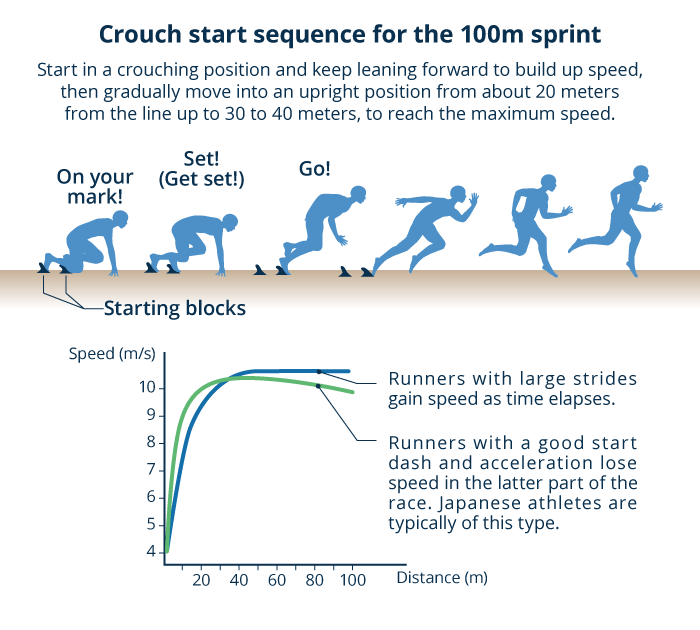
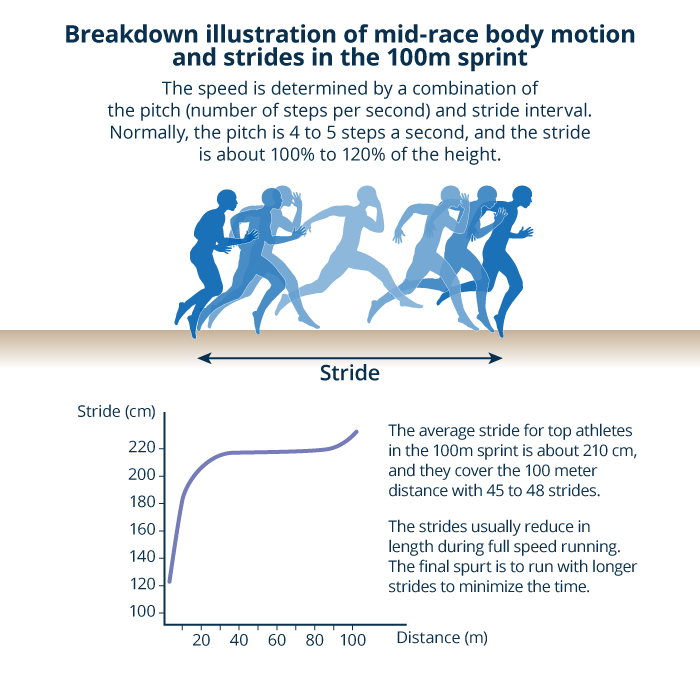
TMR/PMR heads, breaking through the limitations in high track density
A HDD is frequently used in PCs, HDD recorders, and servers as an information storage device. In it, a magnetic disc (platter) revolves at high speeds, over which a swing arm scans. The arm has a recording element of a magnetic head that inscribes data onto the magnetic disc recording layer by creating a micro magnet and reads data by capturing it with a reproducing element.
The micro magnet that carries data is written on the same magnetic disc concentrically. This is called a track. The word track originally means the rut of vehicle wheels left in the road, which has come to refer to the tracks in athletic fields and the tracks on magnetic discs.
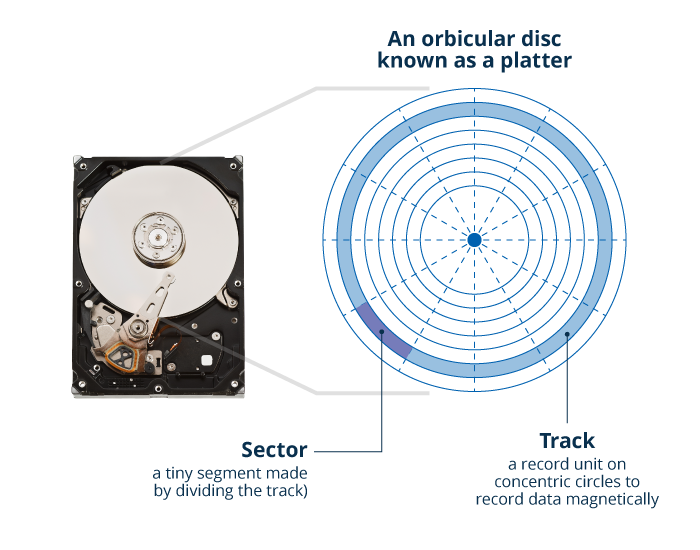
In the 1990s, the limit of the HDD surface recording density was said to be 100 Gbpsi (gigabits per square inch). This was because the recording method at the time was longitudinal magnetic recording, in which micro magnets were arranged in the horizontal direction of the disc surface. In order to achieve over 100 Gbpsi with this method, the track width must be in the order of nanometers. Arranging such small micro magnets longitudinally will make the magnetization direction unstable due to heat etc., resulting in a loss of recorded data.
A breakthrough to this problem was made by the perpendicular magnetic recording (PMR) head, which TDK was first in the world to make available. By arranging the micro magnets perpendicularly to the disc surface, the magnetization direction is stabilized, and at the same time it enables an amazing high track density which was impossible with the conventional method.
Perpendicular magnetic recording thus helped to further increase the recoding capacity of HDDs and minimize their size at the same time. The TMR/PMR head, combining the writing head with a high-sensitivity playback element TMR, is the mainstream HDD head today.
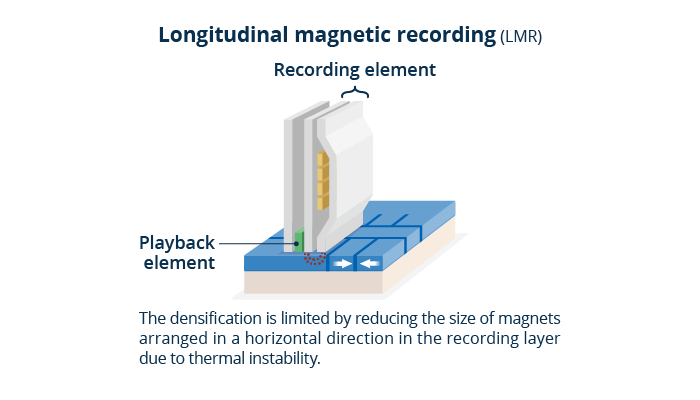
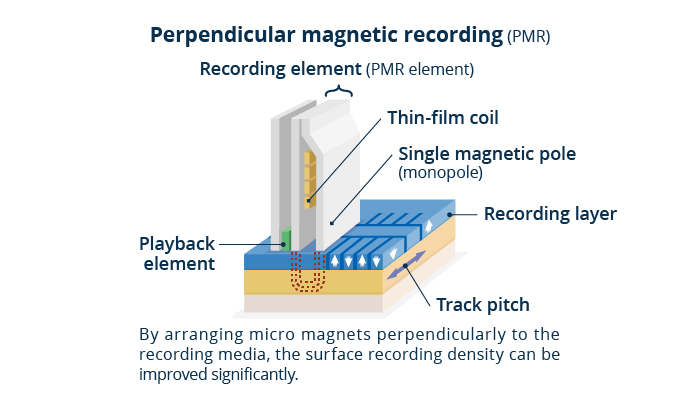
<TMR/PMR head>
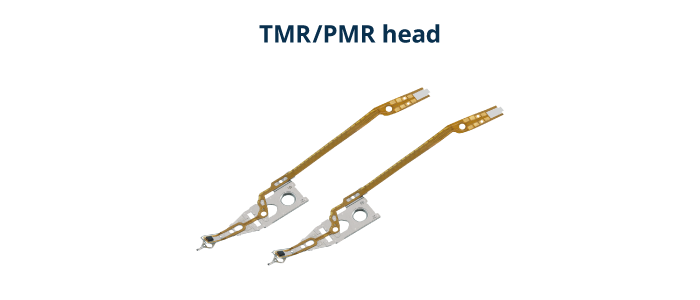
TDK has adopted a special shield structure and succeeded in realizing a PMR element that ensures an excellent S/N ratio and reliability. A combination of this PMR element and the high-sensitivity TMR playback element has given birth to TDK’s TMR/PMR head for HDDs.
TMR/PMR head
https://product.tdk.com/info/en/products/sensor/angle/tmr_angle/technote/tpo/index.html
Deciplines
https://www.iaaf.org/disciplines/middlelong/800-metres
TDK is a comprehensive electronic components manufacturer leading the world in magnetic technology



